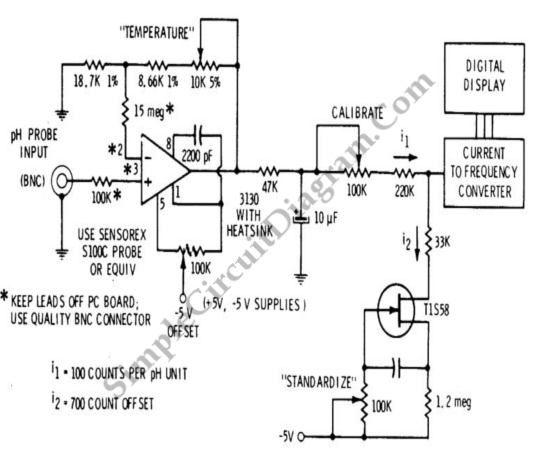Digital pH Meter Signal Conditioner
A pH meter circuit is basically an amplifier to boost a voltage signal which is produced by a pH probe. The pH probe itself is equal to a battery cell when submersed in the measured solution, producing a weak voltage and current signal. High input impedance requirement for pH probe while keeping the cost low, a 3130 CMOS op-amp give the solution for the signal conditioning circuit. The output of the probe, which is swinging from positive DC voltage to 0V for low pH to pH 7, and further to negative voltages for higher pH values. This voltage is amplified in a circuit that provides gain adjustment to correct for temperature of solution being measured. Output of opamp can be fed directly to center-scale milliammeter through 100K calibrating pot for analog reading. In digital display, 0V output representing pH 7, then pH output is converted to calibrated current for summing with stable offset current equal to 700 counts. This converter produce a variable frequency and very suitable for digital display. Here is the schematic diagram of the pH probe circuit:
